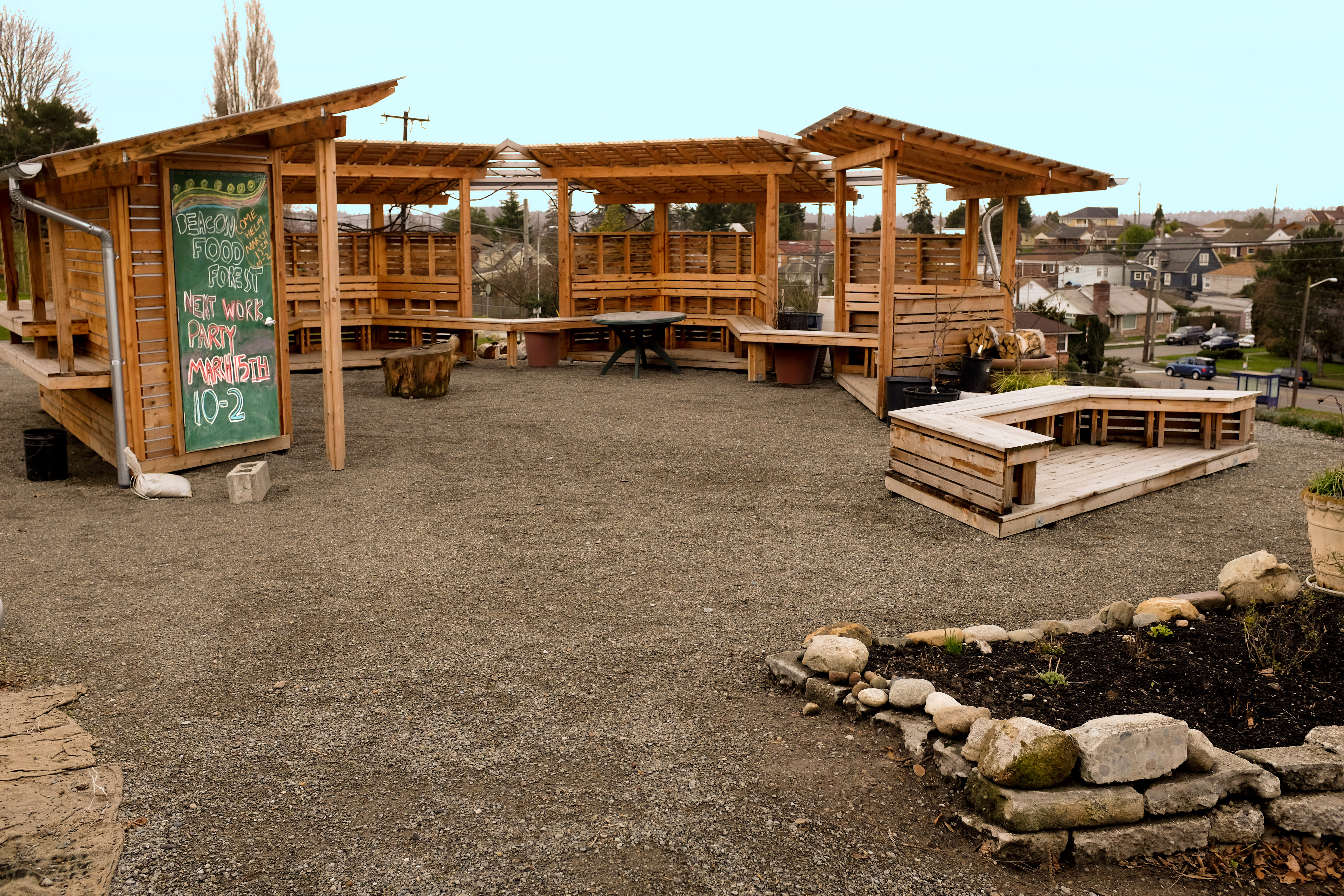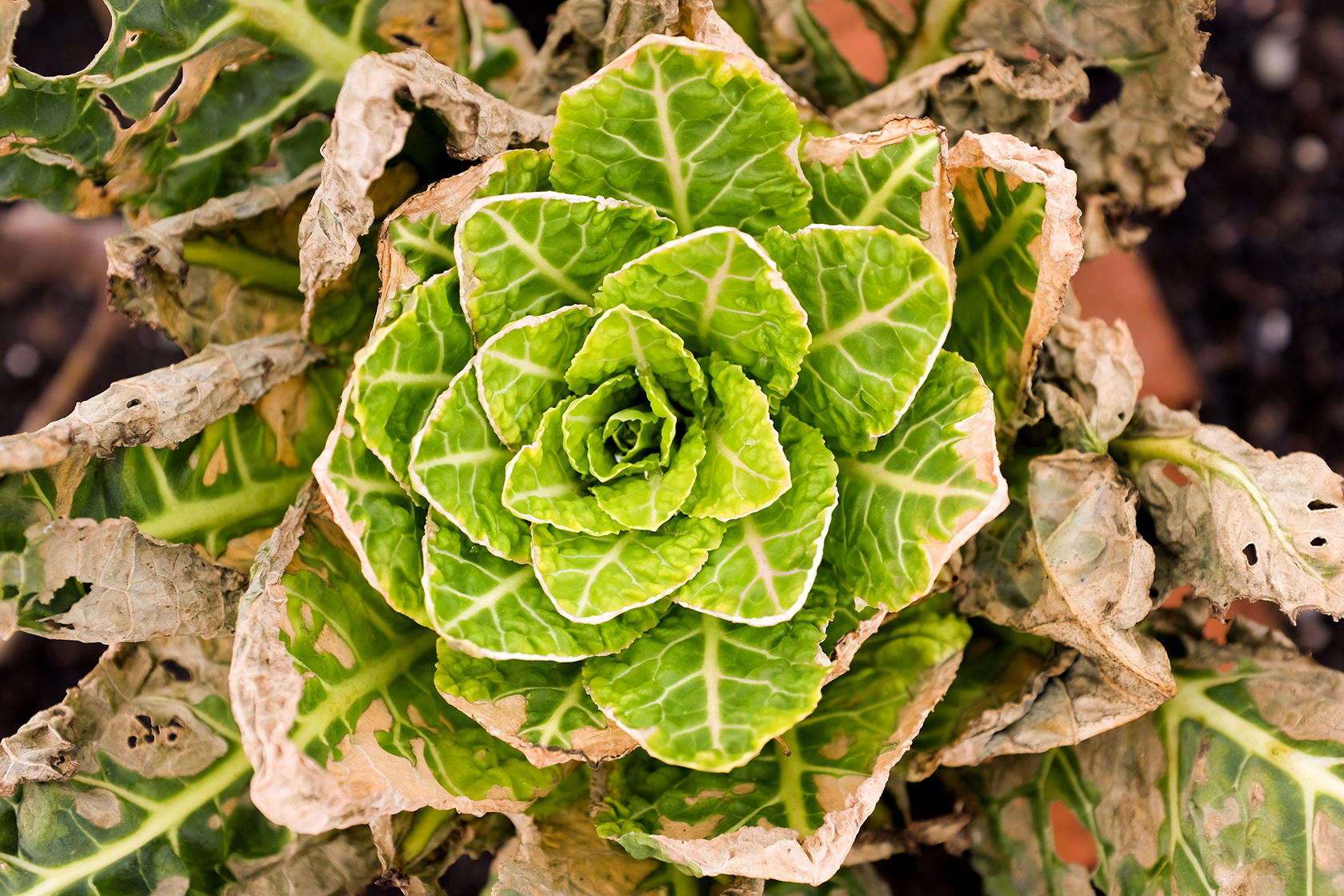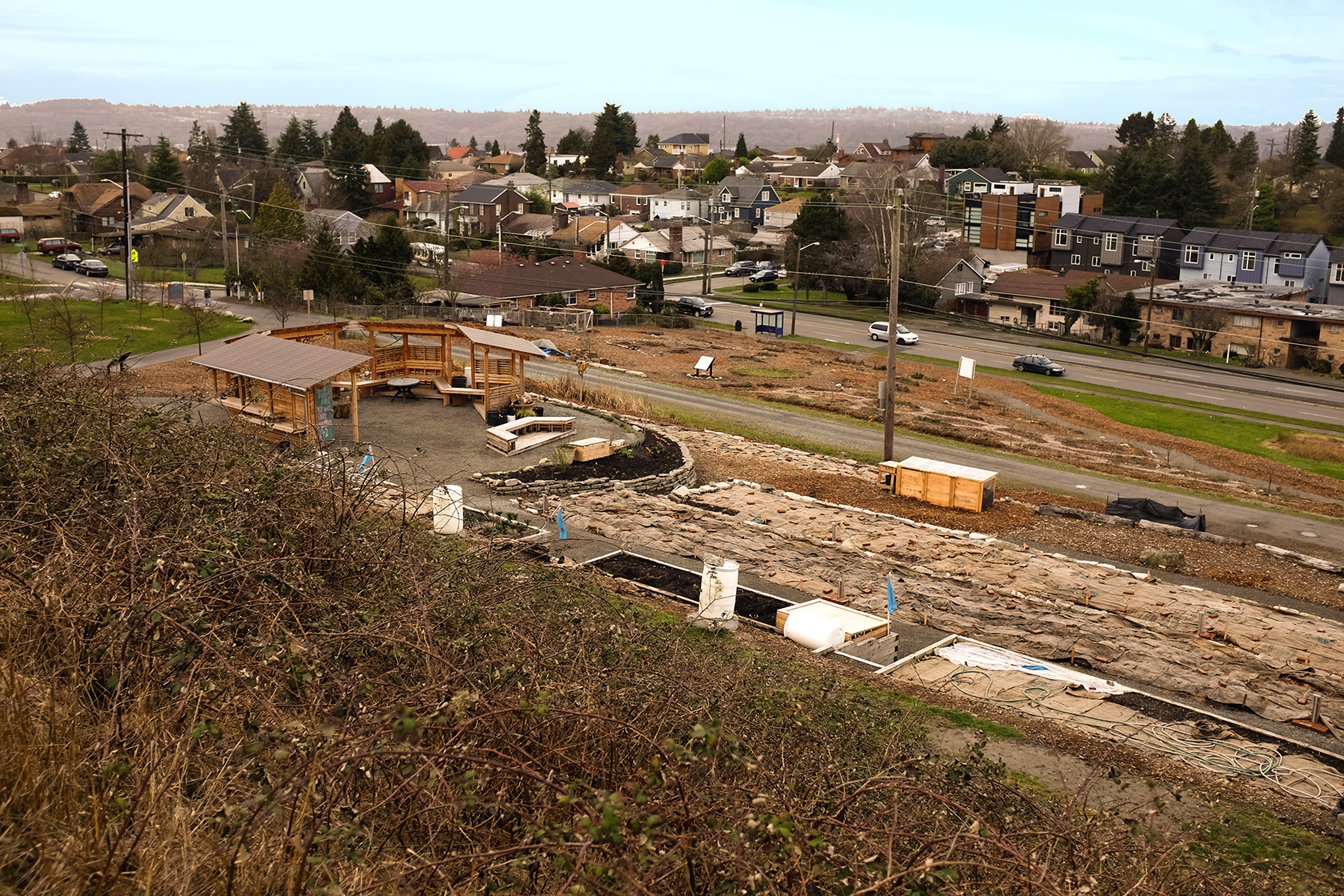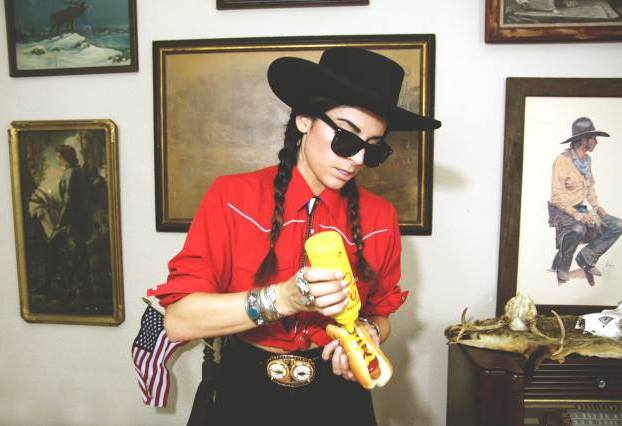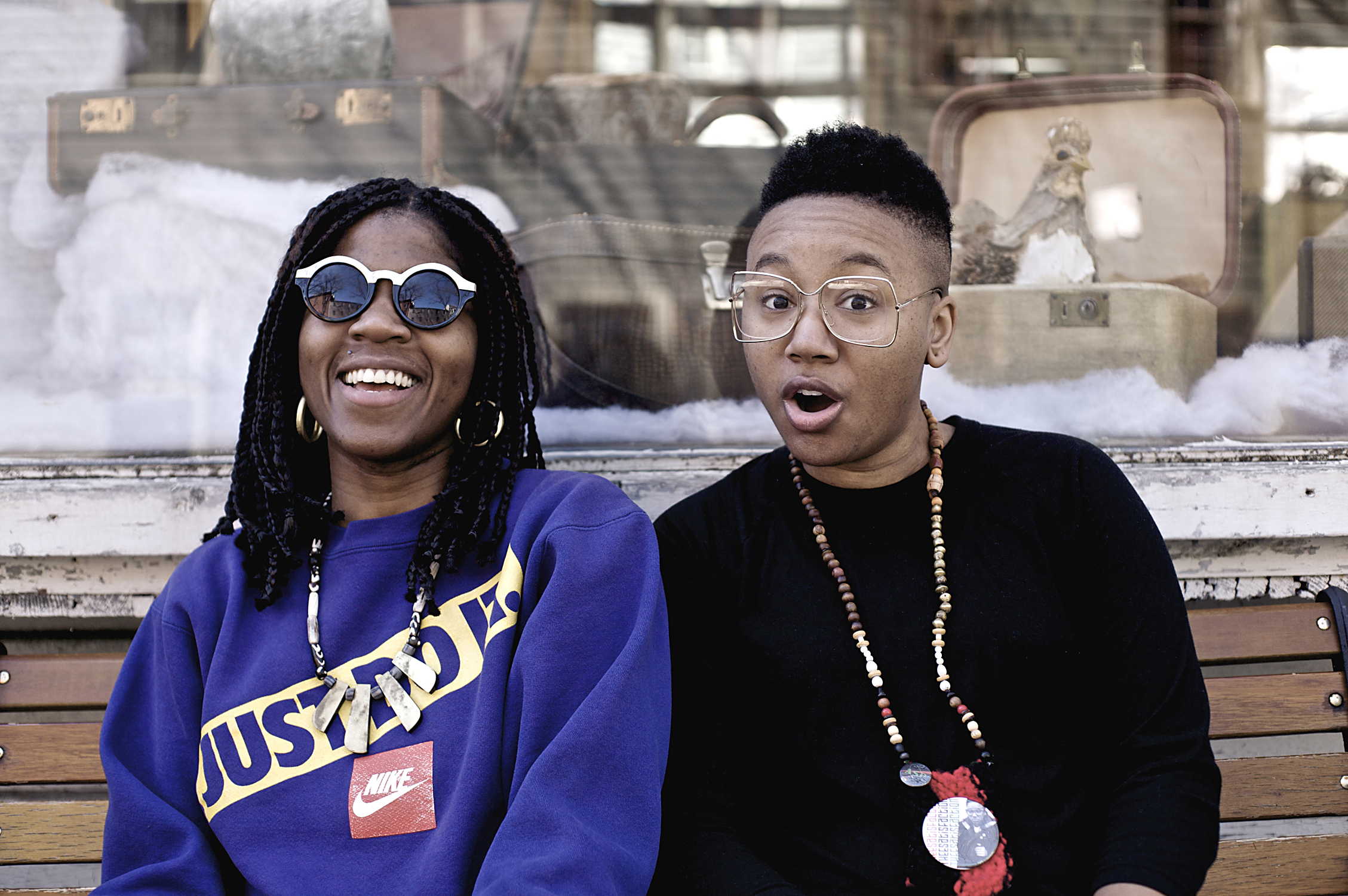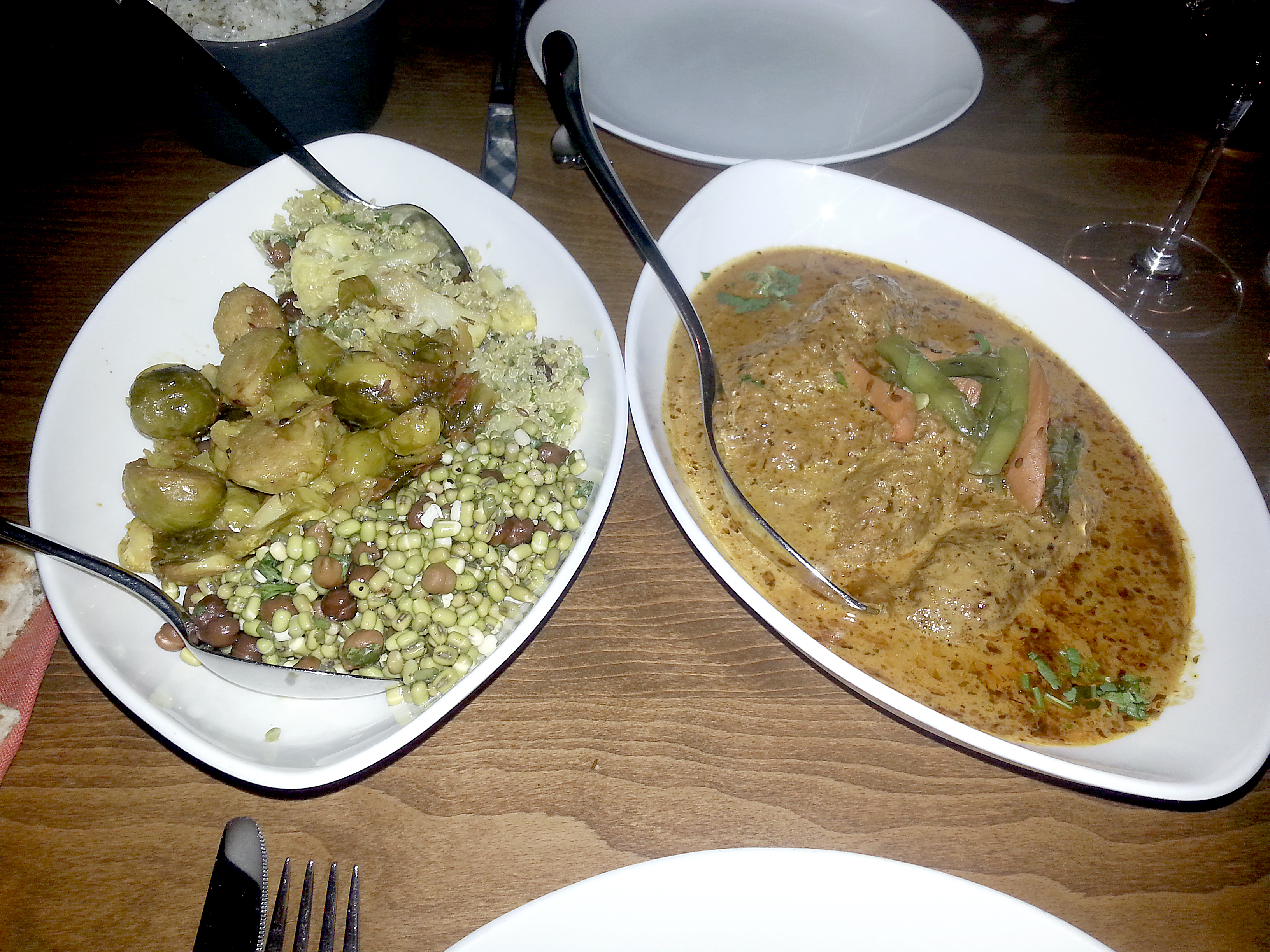In an unassuming corner of Beacon Hill, a seven-acre parcel of land owned by Seattle Public Utilities (SPU) is under siege. It’s occupied by compost, cisterns, piles of mulch, and a team of dedicated volunteers. This is the Beacon Food Forest (BFF), a long-term permaculture project that aims to cultivate not only land—in this case, a seven-layer edible forest garden—but the concept of urban food forestry. Its goal: to inspire the “community to gather together, grow our own food, and rehabilitate our local ecosystem.” Its stewards hope someday it will become a model for the rest of the nation that will help curb reliance on foods grown and processed on a global scale, and help to rehabilitate urban soils.
At the moment, BFF co-founder Glenn Herlihy and his group are celebrating a small victory. With his steering committee, he just signed a memorandum of agreement with Seattle P-Patch and SPU making the Beacon Food Forest—essentially an oversized community garden—an officially organized group, subject to the rules and responsibilities of a P-Patch. Good news, but the project is far from complete. He meets me at the site and explains. “We’re just finishing phase one, to develop two acres,” he says. Scanning the expanse of the remaining five, an untouched, sloping lawn adjacent to Jefferson Park, he says there is no deadline as development enters phase two. “This is a massive volunteer effort,” he says. While many trees, shrubs, and perennials have been planted at the site, few are developed enough to produce. The biggest yield so far, says Herlihy, has been “kale, strawberries, and pumpkins.
Yet in a progressive city hungry for all things farm-to-table, support for the idea, originally conceived as a final project for a Seattle permaculture class, has been strong. Funded through a number of community grants in partnership with SPU, bolstered by the efforts of volunteers, the Beacon Food Forest helps fuel the idea that growing food for Seattleites here in Seattle—not in Carnation or Yakima—might be possible someday.
Permaculture is an eco-friendly style of farming
that “engineers” a plot of land to suit the needs of its farmers in harmony with the ecosystem. Applying its many principles to the idea of a food forest will result, organizers hope, in a highly manicured edible landscape that produces food by and for the community. By volunteering to help maintain it, anyone can have access to it.
Incorporating all seven levels of its design however—from its top canopy of fruit and nut trees to the berry shrubs, edible perennials, and annuals on the lower levels—will take considerable time, and getting the plants to mature is a mere fraction of that process.
The real work is finding the manpower to develop it, though that has not been a problem so far. At times, volunteer work parties have numbered close to 100. Local businesses like Caffe Vita, The Essential Baking Company, and Tall Grass Bakery donate refreshments. The project’s Facebook “likes”—as good an indication of success as any these days—number over 7,000; its listserv is 2,500 e-mails strong. Everything else, from additional funding to peripheral support like consulting, comes from a slew of like-minded nonprofits, like Seattle Tilth, the city’s organic gardening and urban ecology organization.
“I’m not surprised that the project might appear to be going slowly,” says Liza Burke, communications director for Seattle Tilth. A number of its members—educators, master composters, interns—are involved in some way at the food forest site. “But that’s what’s exciting about what’s going on in Seattle. There are so many types of programs being built to create a healthy, local, sustainable food system. You know, not just one organization is going to take down the corporate food system.”
“Taking down the corporate food system” isn’t exactly how Herlihy describes the food forest, but the notion of dismantling “the man”—seed-patenting agribusinesses like Monsanto and food-processing giants like ConAgra, who some allege desire control of the world’s food supply—does factor into the project’s sustainability plan, not to mention the environmental cost of industrial food production. Those costs, for example, include eight million acres of farmland in China now too polluted to grow crops, and bee colony collapse syndrome, linked to the use of pesticides on industrial farms to grow vast quantities of food.
Herlihy says the food forest’s commitment to “neighborhood resiliency and food justice”—the idea that all communities have the right to grow, sell, and have access to safe, healthy food—can help mitigate the effects of that, while at the same time combating hunger. “There are lots of hungry people in Seattle,” says Herlihy, especially in Beacon Hill, a neighborhood he says is “one of the most diverse ZIP codes in the country.”
Whether such diversity is regularly represented at the forest among its volunteers is another consideration for Herlihy. If the project can ultimately provide the fair access and food justice it purports to offer—to serve and be served by those who need it most—remains to be seen.
“I worry about it,” says Herlihy. He mentions one work party that united workers from 26 different ZIP codes, but admits there’s a certain “socio-economic flaw” built into the idea of the food forest: “If you’re working two jobs and have a family, you don’t have time to volunteer at the community garden.”
Melody Wainscott, the site’s media coordinator, is less worried about what’s to come—and who’ll be reaping the benefits. “To say that BFF is a sustainable model for urban food forestry in practice would be premature . . . there isn’t enough data to know the answer,” she writes in an e-mail. Yet it’s a goal: “We hope to build a model that is adaptable for other food-forest practitioners. All things food forest are not defined, except that learning will take place.”
Working on a learning curve, volunteers have labored to incorporate as many members of the community as possible, and have targeted their outreach through pamphlets in the varied languages of Beacon Hill like Lao, Vietnamese, Chinese, and Somali. Soon the food forest will offer translated versions of its website.
“The concept of food forestry appeals to a wide variety of people,” Herlihy says. Reaching out to the community, mobilizing those interested, and keeping them engaged, explains Burke, will make all the difference to the venture’s success.
“It’s really important to have a high level of engagement with community members,” she says. “Partnering with different community groups [will help] the infrastructure and produce more interest, which will produce more [volunteers]. And people feel empowered when they’re working with the land.”
gelliott@seattleweekly.com
Beacon Food Forest will hold its next volunteer work party at the site this Saturday, March 15, at 10 a.m. A commemorative ceremony to usher in phase two of the project takes place in June.
